
Of all the places around the world where divers can meet big animals in open water, none can compare with the waters of the Sea of Cortez and Mexico's Eastern Pacific for sheer numbers and variety. Blue, humpback, gray and pilot whales make appearances, numerous species of dolphins come to play, orcas hunt, manta rays and their smaller cousins glide by, sea lions frolic, a dozen species of sharks are on patrol and lightning-fast billfish herd baitfish into protective clusters. All of this and more can be experienced with one of the curated adventure trips offered by Caradonna and Baja Expeditions. Here's a sampling of what to expect.
GIANT MANTAS OF SOCORRO ISLAND
Rising from deep Pacific waters, the volcanic spires of the Socorro Islands are an oasis of marine life. The star attraction for divers is a rare chance to swim with gregarious giant manta rays, and there's more. Massive schools of jacks swarm submerged pinnacles, bottlenose dolphins come close for a look, and up to a dozen species of shark patrol the perimeters. Seasonal highlights include schooling hammerheads and silvertips, pilot and humpback whale sightings and tuna migrations. The islands, which are located some 250 miles south of Cabo San Lucas, are a UNESCO World Heritage site with access by permit only. Baja Adventures has been hosting divers on liveaboard trips to the Socorros since 1978 and is currently offering nine-day excursions with five days of three to four dives daily on iconic sites such as Roca Partida, Cabo Pearce, Punta Tosca and San Benedicto's Canyon and Boiler.
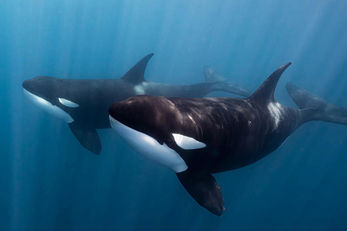
ORCA SAFARIS IN THE SEA OF CORTEZ
In spring, massive flights of mobula rays migrate along the southeastern shores of the Baja Peninsula. Sharing the water with thousands of rays is an awe-inspiring experience. Things get even more exciting when the orcas show up. The Sea of Cortez is home to a resident population of orcas. The ranks swell each year as more of these sleek black-and-white predators arrive to stalk the rays in one of nature's most thrilling displays of coordinated hunting. Baja Adventures' seven-night trips depart from Cabo San Lucas to visit hotspots known as “orca cafés,” near Isla San Jose and Cerralvo Island. Encounters can involve snorkeling, free diving or diving. In addition to orca encounters, these trips may include sightings of whale sharks, several species of dolphins, sea lions, and sperm, humpback and blue whales.
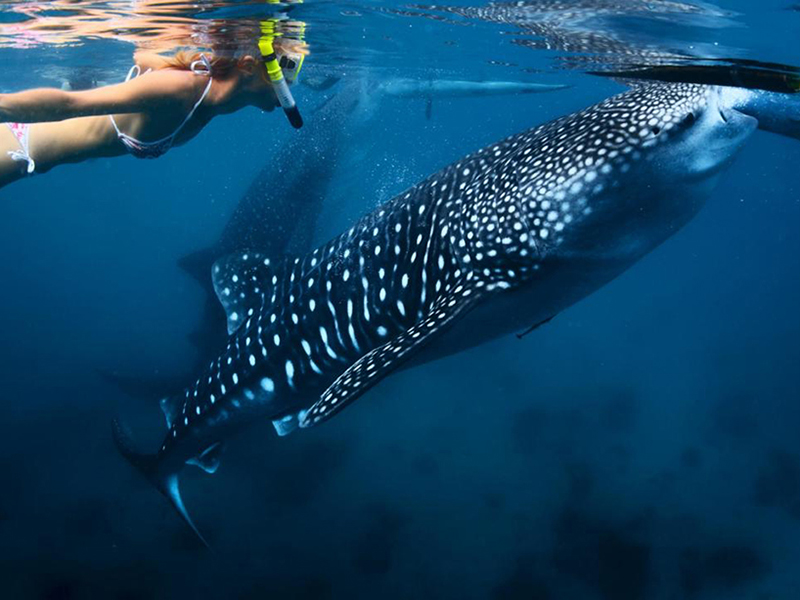
ULTIMATE WHALE SHARK CRUISES
Bahia de Los Angeles is one of a select few locations around the world where whale sharks gather in large numbers. What sets the seasonal meetups in this deserted bay apart from other destinations is the lack of crowds. Unlike hotspots in the Yucatan Peninsula, Philippines and Maldives, where swimmers sometimes outnumber the sharks, summer gatherings in the central Sea of Cortez are witnessed by a fortunate few who make the journey north from La Paz by liveaboard. In addition to several days swimming with gatherings of up to 200 whale sharks, Baja Expedition trips visit sites along the way at Las Animas, Isla San Ildefonso and San Pedro Martir, and search open water for chances to encounter pilot whales, dolphins, orcas, pilot, sperm and finback whales.
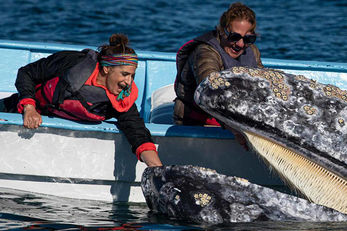
GRAY WHALES OF SAN IGNACIO LAGOON
There's only one place in the world where humans and whales make direct up-close contact. Mexico's San Ignacio Lagoon is the winter sanctuary for thousands of gray whales that come from as far as the Arctic Ocean to breed, give birth and nurture their young. The lagoon is a designated whale sanctuary, accessible only by special permit. Baja Expeditions organizes permitted encounters that combine a glamping experience on the desert shores of the lagoon with daily on-water encounters initiated by the whales. It is not uncommon for whales to approach within touching distance of boats, and mothers will sometimes bring their young calves along for a closer look at the human visitors. Tours are offered during peak season months from mid-January to mid-April when the whale population is greatest.
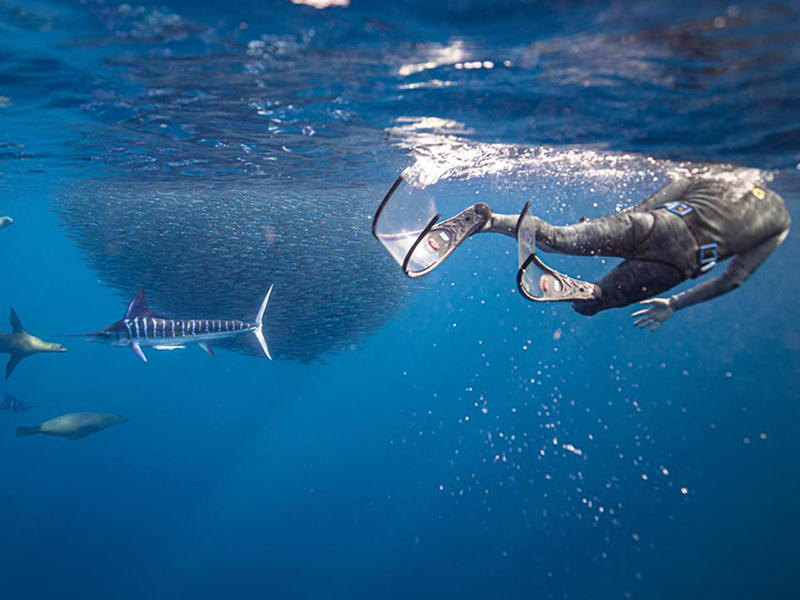
SARDINE RUN AT MAGDALENA BAY
Coastal waters on the southwestern coast of the Baja Peninsula are the site of a seasonal spectacle that's being likened to South Africa's famous sardine run. From mid-October to December, millions of small fish form protective schools, seeking safety in numbers from the sleek striped marlin. The billfish corral their prey into tight bait balls, then slash through the formation at speeds of up to 30 miles per hour. This action takes place in clear water, making for fantastic photo ops. The feasting marlin may be joined by Bryde and humpback whales that crash the party with mouths agape. The activity also draws sharks, dolphins, sea lions and diving seabirds. Baja Expeditions trips originate in Cabo San Lucas and may also include some diving adventures along the way to and from the sites of the sardine run.
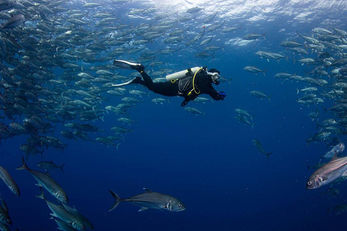
LA PAZ TO LORETO, SEA OF CORTEZ
Summer in the Sea of Cortez is a time of calm seas and warm, clear waters. In July and August, Baja Expedition schedules six- and eight-day trips from La Paz that take in the sea lions of Isla Las Animas, La Reyna's swirling fish tornadoes, the World Heritage sites of Espiritu Santo and the islands of Loreto National Park. Each trip is a unique adventure that could include anything from schooling hammerheads to whale sightings, orcas, dolphin pods and large flocks of rays. Trips also include wreck dives, snorkeling, kayaking, beach time and guided hikes led by a naturalist.
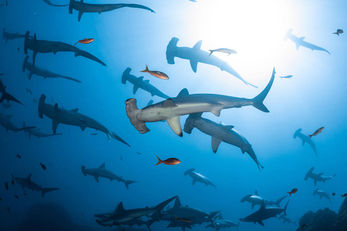
ULTIMATE WHALES COMBO
The Ultimate Whale experience is an 8-day wintertime trip that begins with Cabo San Lucas with a day devoted to watching humpback whales. The action then moves to La Paz for a swim with whale sharks and a trip to Isla Espíritu Santo to snorkel with sea lions. Next up is a three-night cruise to Loreto aboard a luxury dive yacht, with opportunities to swim with dolphin pods, fin whales, blue whales, and humpback whales. The final leg of the adventure begins with a private flight to San Ignacio for three days of interactions with the lagoon's famous gray whales.